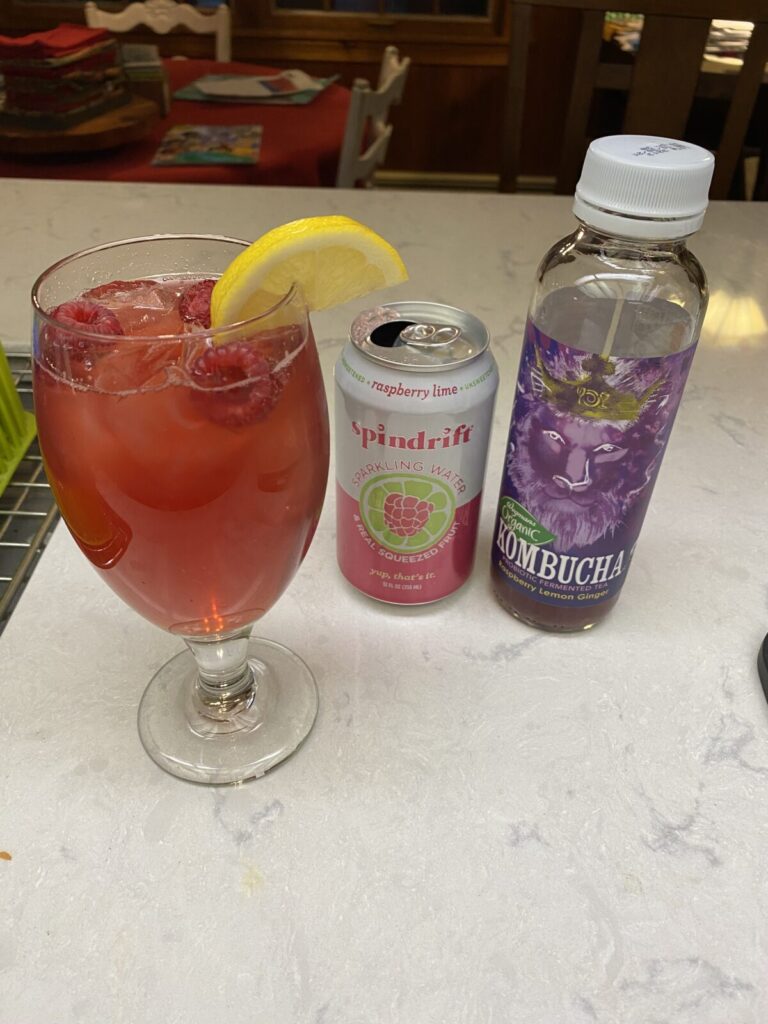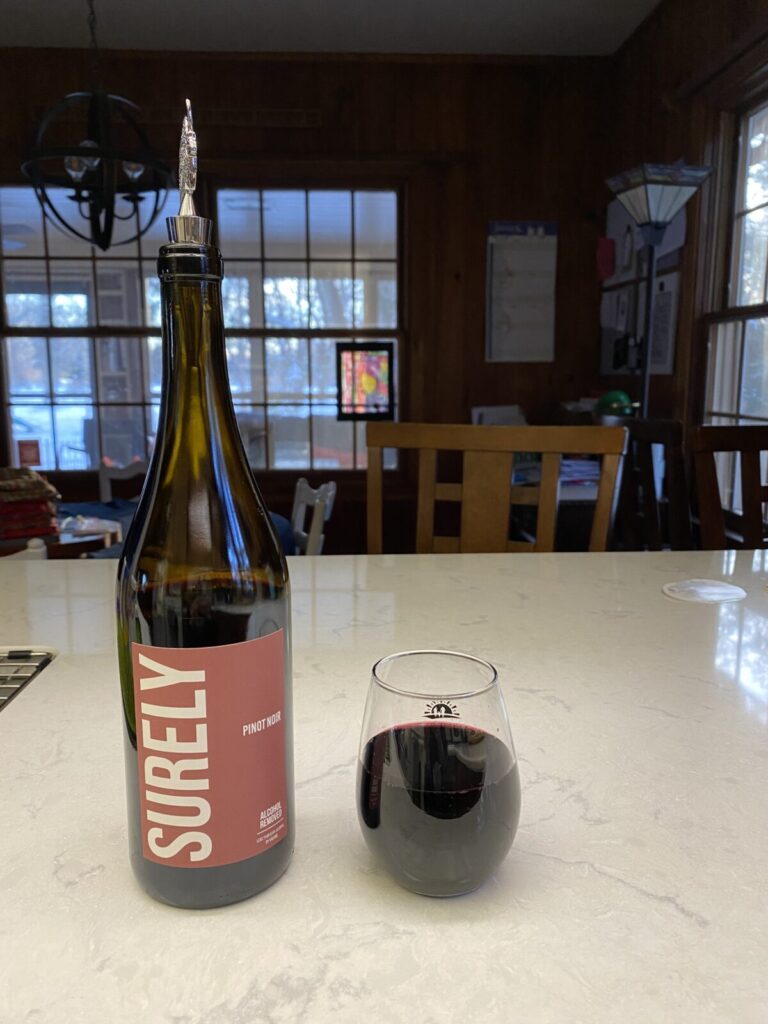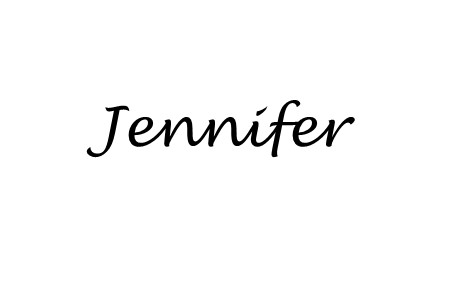It’s the third week of Dry January. I have managed to make it more than halfway through the month without any alcohol. So far, it has been both laughably easy and frustratingly difficult.
The first few days of the month were easy. Having overdone it a bit during the holidays, I was not interested in drinking anyway the first couple of days. I drank Spindrift, kombucha and water and did yoga. I jotted down virtuous notes each night – “No desire for a drink!” “Thought about a glass of wine during the Bills game but didn’t need it!”
By Day 4, my notes read, “Definitely wanted a drink.” So much for easy.
Dry January has certainly been a learning experience so far. I’m noticing my triggers and my habits more. For example, 3:45 pm is the time of day that I start thinking about having a drink. That makes complete sense – I’m starting to wind down my workday and think about what I’m making for dinner. I generally have a glass of wine while cooking. Coming to the end of the day and the tasks that go along with it are a trigger for me. Stress is another. Again, no surprise, as many of us equate alcohol with relaxing.
On the weekends, when I’m doing household errands – cleaning the litter boxes, folding laundry – I have a drink when I’m done with my tasks as a reward. I definitely have taught my brain that wine = reward. Finishing my errands last weekend and not having the wine was a struggle. It’s a habit, the same as a beer during the Bills game and mimosas at brunch (both things I skipped this past weekend).

This is hard! I was certainly aware that I had developed a habit of drinking, of having a glass of wine to relax, relieve stress, wind down from the day. That’s the whole point of Dry January, to step away from the habit of drinking and gain some perspective. It’s interesting to see how ingrained habits become and how strongly they drive our behavior.
Habits are fascinating things. Consider some of the definitions for the word “habit” offered by merriam-webster.com:
- “a settled tendency or usual manner of behavior”
- “an acquired mode of behavior that has become nearly or completely involuntary”
- “a behavior pattern acquired by frequent repetition or physiologic exposure that shows itself in regularity or increased facility of performance”
Settled. Acquired. Involuntary. Pattern. Frequent repetition. Increased facility of performance (meaning, the more frequently we do something, the easier it becomes). Basically, we do something over and over and eventually we do it without thinking. It becomes a habit.
Our lives are full of habits, some good, some bad, some just there. We tend to call out “bad” habits in ourselves and others – knuckle-cracking, nail biting, hair-twirling, pencil-chewing. We celebrate “good” habits – an exercise habit, a getting-up-early habit, a drinking-water habit.
Most of our habits are neither good nor bad, they just are. Most of the things you do each day are a habit. Habits are the way our brains learn to conserve energy. Imagine if you had to consciously think about each thing you do every day. Turn off alarm, push back blankets, swing legs out of bed, stand up, walk to bathroom, put toothpaste on toothbrush, insert toothbrush into mouth, brush teeth, rinse toothbrush…I’m tired from typing just that much! Instead, your brain learns a “getting out of bed” habit, a “brush teeth” habit, a “make breakfast” habit, a “drive to work” habit. Habits are efficient. We can accomplish tasks without wasting energy deliberating what to do next.
Habits are built through learning and repetition, and they are useful when we are trying to accomplish a goal. For example, the habits I listed in the previous paragraph would contribute to the goal of “getting ready and out of the house for the workday.” We begin to associate certain cues (alarm going off) with behaviors we need to display (turn off alarm and get out of bed) to move us along the path to the goal, or the reward.
Over time, our brain builds a kind of roadmap to guide us through this process of cue-behavior-reward, and any deviation from this roadmap causes confusion in the brain, exactly like when you take a different turn than the one your Maps function wants you to take and it begins screaming “recalculating!” Maps doesn’t know where you’re trying to go, it doesn’t know if you have additional information, it just knows you’re off the path – and the path is the shortest and most effective way to get to your goal.
But sometimes you know that turning right is a better idea than going straight or maybe you’ve decided on a different destination without informing Maps. (I’m really beating this metaphor to death.) Sometimes, for whatever reason, we need to change a habit or form a new one. Changing or “breaking” a habit is really, really hard work.
Our habits are the path of least resistance for our brains. So when we try to take a new path, there is a lot of resistance. Imagine going for a walk and having a choice between a clear, dry sidewalk and a sidewalk covered with a foot of snow. You could walk on the snow-covered sidewalk, but you’ll get wet, you might fall and it will be really hard work. The easiest thing to do would be to choose the other sidewalk.
If you choose the snow-covered sidewalk though, and you walked on it every day and maybe the sun came out and melted it a little bit, eventually it would get easier to walk on. And over time, you might even forget completely about the other sidewalk.
This is what it’s like to change a habit. Repetition encourages your brain to form a new path of least resistance through a process called neural pruning. Our brains form connections between neuron pathways throughout our lives. It’s common for our brains to strengthen the connections we use the most often and delete the connections we no longer use. This is how we learn skills and behaviors. This is also the reason we struggle when learning how to use a new smartphone or when we have to look up the directions for logging into a system at work that we use infrequently. Our brains haven’t formed strong enough connections yet to do those things by habit.

When you’re building a new habit or breaking an old one, you have to do it consciously. You have to think about it. (The mental equivalent of breaking a path on the snow-covered sidewalk.) It can be helpful to remove or eliminate cues that trigger the old habit and create new cues to trigger the new habit. You can also remove barriers that prevent you from engaging in desired behaviors and add barriers that prevent you from engaging in undesirable behaviors.
To break my habit of drinking after work and in stressful situations, I moved my wine to the basement. I’d have to put on my shoes and go downstairs into the cold basement to get it – definitely a barrier for me. It might not stop me completely, but it makes me think twice about it and so far it’s worked. I also try to prep dinner earlier in the day, either by assembling something to be baked later or filling the slow cooker in the morning. It relieves a lot of the “end-of-the-day” stress that I would normally counteract with a glass or two of wine. Also, my brain associates “drinking while making dinner” with “five o’clock in the afternoon,” not “eight-thirty in the morning,” so I eliminate that time-based cue that leads to the behavior of pouring a glass of wine.
It is getting easier not to drink. I’m finding that as I move through Dry January, I’m defaulting to “not drinking” instead of “drinking.” I’m hoping that I will get to a place where drinking is no longer a habit, but something I do or don’t do as a conscious decision.
Changing behavior and breaking habits is hard work. I’m grateful to have training and skills in this area that have been helpful for me during this process. If there is something you’re working on or changes you want to make, I’d love to help you. Let’s work together.
Thanks for being with me on this wellness journey. Go Bills!


Leave a Reply